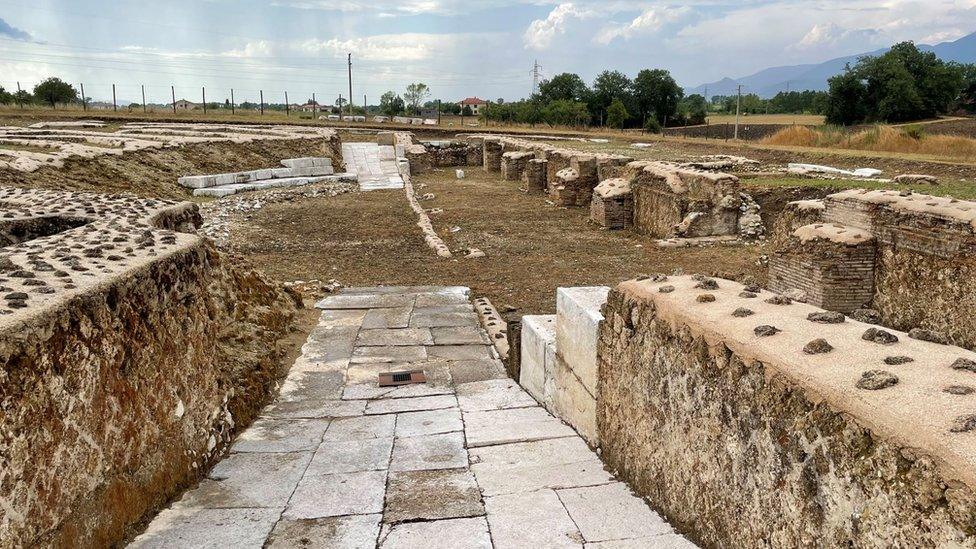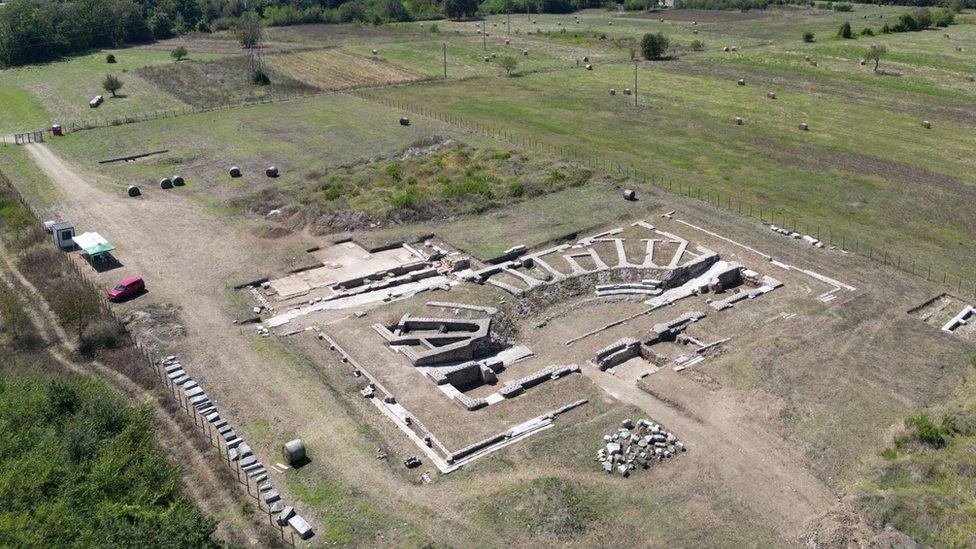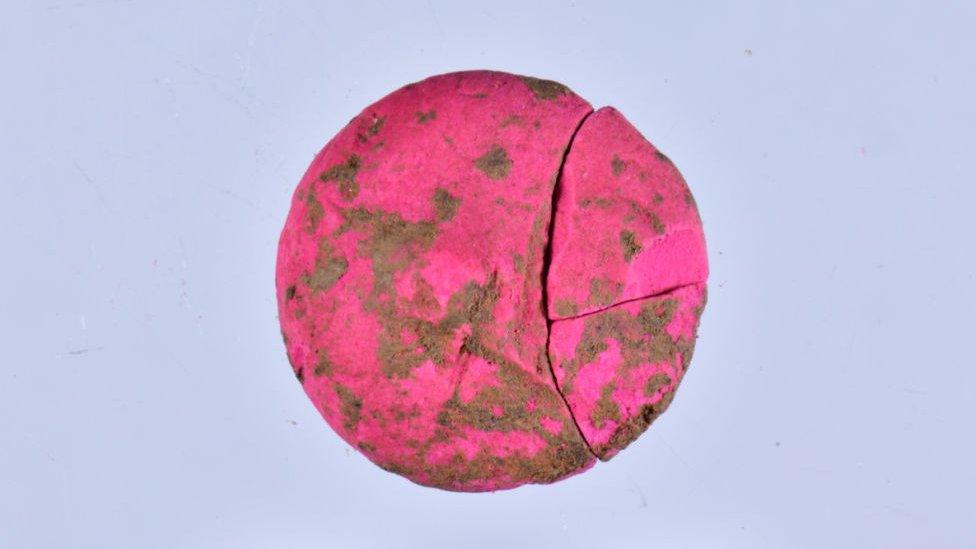Hidden Roman theatre found in Italy dig
- Published
- comments

Archaeologists have found the remains of a roofed theatre, market and river port at the site of a Roman town.
The discovery suggested that Interamna Lirenas, in central Italy, was a thriving town, potentially home to about 2,000 people.
It was uncovered by experts from Cambridge University, who said until now it had been assumed the town was a declining backwater.
Instead, the roofed theatre displayed the town's wealth, power and ambition.
Finds at the site, including analysis of excavated pottery, suggested its decline began about 300 years later than experts had previously thought, in the later part of the 3rd Century AD.
It is believed the town's residents abandoned it in fear of being invaded by attacking armies.
How did archaeologists find out so much about the town?

The town in southern Lazio is now largely crop fields.
The research team conducted a series of digs and carried out a magnetic and ground-penetrating radar (GPR) survey of about 60 acres - roughly the size of 30 football pitches.
Dr Alessandro Launaro, the study's author said: "We started with a site so unpromising that no-one had ever tried to excavate it - that's very rare in Italy."
He added: "There was nothing on the surface, no visible evidence of buildings, just bits of broken pottery. But what we discovered wasn't a backwater, far from it."
We found a thriving town adapting to every challenge thrown at it for 900 years. We're not saying that this town was special, it's far more exciting than that.
Dr Launaro, project lead at Cambridge's Classics faculty, said the town was believed to be abandoned before the Lombard invasion of the late 6th Century AD.
This was due to the fear of attack from those living there, as they were on a direct route the invading armies were bound to use - but experts say they found no layer of ash or any other evidence to suggest the town was violently destroyed.

The survey, near the River Liri, revealed the presence of a large warehouse, a temple and a bathing complex.
Researchers are now confident these structures served as a river port between the late 1st Century BC and the 4th Century AD.
The team also discovered the remains of a roofed theatre, which might have seated up to 1,500 people.
Archaeologists also found 19 courtyard buildings and land they believed served as a cattle and sheep market.
- Published7 October 2023

- Published12 January 2022
